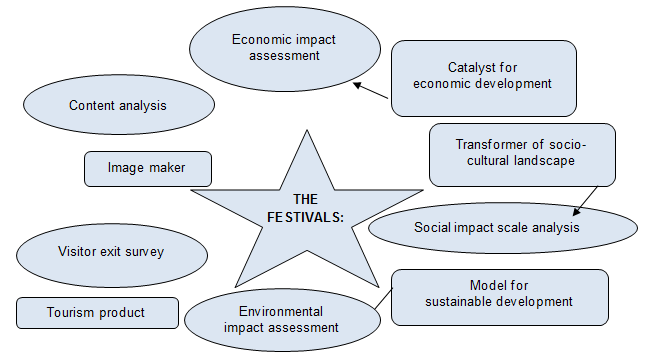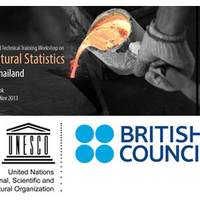Festival Statistics | UNESCO handbook


A new publication from the UNESCO Institute for Statistics 'Festival Statistics: Key concepts and current practices', is the third in series of cultural statistics handbooks for policy-makers and practitioners. The handbook sets out major areas of research and practice in the measurement of festivals to help organisers and national authorities to evaluate the economic impacts of festivals.
In any community, festivals are an important showcase of culture and creativity, and the cornerstone of economic development strategies to attract tourists. But governments often lack the tools necessary to measure the full impact of such multi-faceted events.
In addition to assessing commonly-used methods of evaluation, the handbook provides guidance on how to measure the environmental, social and cultural impacts. It reviews best practices and provides a set of recommendations for festival organisers, public bodies and local communities to consider when deciding how their events should be measured.
Among the many findings are:
- Many festivals seek to demonstrate the contribution that they make to local economies by using methods of evaluation, cost-benefit analysis and especially economic impact assessment.
- Many economic studies of festivals use inconsistent methods, involving for example multipliers which exaggerate the knock-on effects of spending and employment.
- Environmental and social impacts are rarely included in festival assessments and evaluations.
- Techniques of environmental and social analysis include; triple bottom line, social accounting, socio-cultural impact assessment, but these have rarely been applied in practice.
- Festival impact assessments rarely acknowledge negative impacts such as contamination by waste or disruption of traditional lifestyles.
- Impact assessments economic, environmental and social are much more common in developed countries than in developing countries. There is an urgent need for more evaluations of festivals in developing countries.
Best practice in measuring festivals in Australia is outlined as part of the report.
Finally, the authors offer their recommendations: Festivals should be evaluated on multiple levels to allow for the inclusion of perspectives of all/most stakeholders; Festival statistics reporting should have a range of baseline statistics; Impact assessments provide a sound analytical platform for measuring festivals and allow for a range and quantum of data to be generated; Any festival-measuring exercise must specify what is actually being measured and that these variables are appropriately matched to indicators; Surveys are the most commonly used data collection procedures; and Festival statistics exercises should show clear indication of outputs for data and the type of data to be generated.
DOWNLOAD report: www.uis.unesco.org/culture/Documents/fcs-handbook-3-festival-statistics.pdf
Published in 2015 by the UNESCO Institute for Statistics in Montreal, the report is Handbook No. 3 in the 2009 UNESCO FRAMEWORK FOR CULTURAL STATISTICS.
Similar content
posted on
11 Mar 2013
posted on
05 Apr 2013
from - to
11 Nov 2013 - 13 Nov 2013
posted on
02 Aug 2022
posted on
14 Mar 2016





